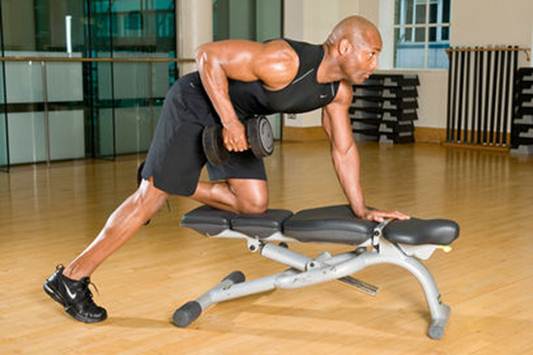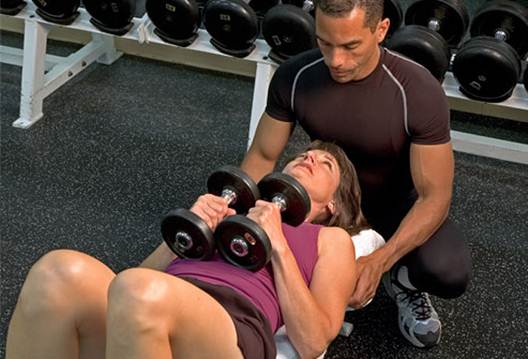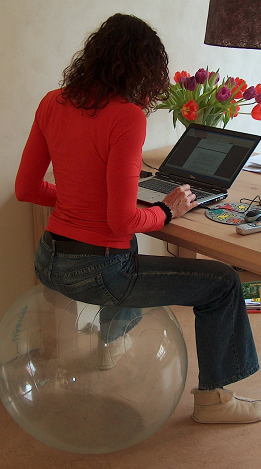Get your form wrong and you may find that
your workouts are more painful than beneficial. We show you how to do it right.
Unless you have a personal trainer watching
over you every minute of your workout, chances are that – at some point –
you’re going to stray from the ideal. This may involve focusing on the wrong
areas or compromising your form. In extreme cases, this can lead to injury. But
even if your knees, spine and neck emerge unscathed, you may not be getting the
most out of your workout. We asked the experts to instruct us on how to avoid
the common workout pitfalls.

1. No jerking
Before you congratulate yourself for being
able to swing those heavy weights, take a look at what you’re supposed to be
doing. “When you’re doing bicep curls, or any other exercise involving weights,
you are aiming to use as many muscle fibres as possible,” says Cindy Melson, a
Durban-based personal trainer. This requires slow, controlled movement.
“Don’t swing those weights wildly. You’re
depriving yourself of the chance of getting firm, toned arms because you’re not
using your muscles to resist the movement. And you also run the risk of tearing
muscles, joints and ligaments,” warns Lushwill Rossouw, a personal trainer at
Virgin Active Gardens in Cape Town.
2. The wrong setting

Finally, it’s your turn to use the machine
you’ve been trying to get to for the past hour. Best you make the most of it
before the other gym goers ask for their turn – so, just to speed things along,
you use the equipment without adjusting the settings.
Bad idea, comments Melson: “Take leg
extensions, for example. If the setting isn’t appropriate for the length of
your legs, you may place strain on your knees.
“What’s more, you won’t be able to use your
full range of motion – which means you’re not engaging your muscles as you
should, and therefore not working to your full capacity.”
3. Pull-down puzzle
Pull downs are an efficient way to work
your lats, but many of us compromise the effect by placing the bar of the
machine behind the neck.
In fact, says Melson, it’s better to pull
down with the bar in front. “When you place the bar behind you, your neck and
chin automatically jut forward,” she points out. This action has the potential
to injure neck and shoulder muscles. Make sure that, as you’re pulling down,
you concentrate on contracting your back muscles.
4. Ab, not fab
Your neck and stomach may not be in close
proximity to each other, but a surprising amount of damage can be done to one
while you’re working the other, especially when you’re making use of ab
machines.
Melson notes that many gym goers have a
tendency to use their heads, necks and upper torsos, instead of their
abdominals, to put themselves up during a crunch. Not only does this mean that
your six pack is going to remain hidden from sight; it also puts you at risk of
straining your neck muscles. Make sure it’s the area between your rib cage and
your hip bone that’s involved in the contraction, Melson advises.
It’s important to guard against a rocking
motion which will make you lose the healthy position of your spine, adds
Rossouw. “Always relax your neck and make sure your abdominals are engaged.
Build crunches slowly, until you’re strong enough to go into a full sit-up, to
avoid injury,” he says.
5. Stop the slouch

We’ve all heard that it’s a good idea to
swap your office chair for a gym ball, as they’re great for ensuring good
posture and tightening the abs.
The problems is, an upright posture while
using a gym ball isn’t guaranteed – you have to work at it by keeping your core
engaged and ensuring your shoulders are back. Make sure you keep this pose
while crunching, bouncing or sitting on the ball, or you may experience lower
back pain.